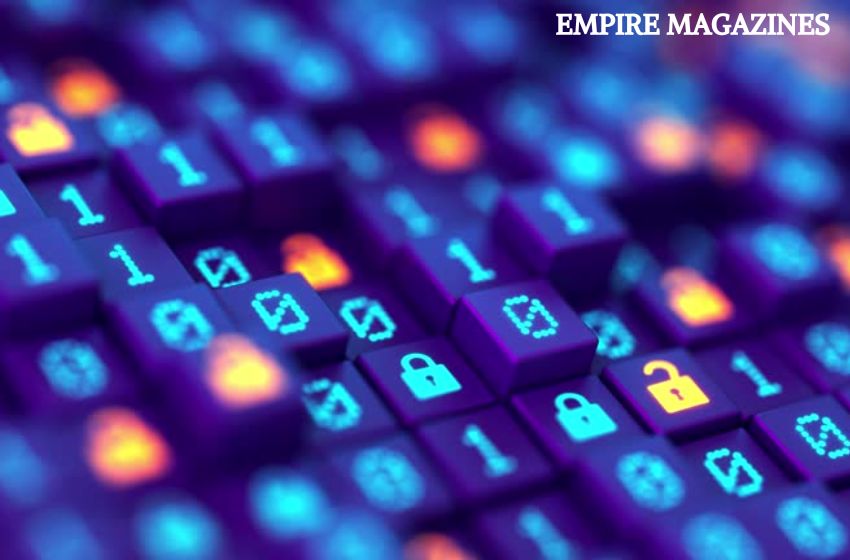Understanding cryptographic keys is crucial for anyone delving into the field of encryption and security. A “Crypto Key only 3 Letters” might seem simplistic in today’s world of advanced encryption, but it represents a fascinating aspect of both historical and modern cryptographic methods. In this detailed exploration, we’ll look at what a “Crypto Key only 3 Letters” entails, its significance, applications, and limitations, all while weaving in the timeless allure of encryption techniques.
Welcome to Empire Magazines, where we decode complex topics into insightful knowledge. Today, we’ll dive deep into “Crypto Key only 3 Letters,” shedding light on its intriguing applications.
What Does “Crypto Key Only 3 Letters” Mean?
In cryptography, a “Crypto Key only 3 Letters” refers to a key used in encryption or decryption processes that consists of exactly three alphabetic characters. Keys are essential for determining how plaintext is transformed into ciphertext and vice versa. Despite their brevity, three-letter keys have been used historically in ciphers like the Caesar cipher and Vigenère cipher, making them a cornerstone in the study of encryption.
Historical Significance of “Crypto Key Only 3 Letters”
Classical Ciphers and Three-Letter Keys
In classical cryptography, ciphers like the Caesar cipher and Vigenère cipher frequently employed keys of varying lengths. A “Crypto Key only 3 Letters” would have been a practical choice due to its simplicity and ease of use. For example:
- Caesar Cipher: A three-letter key can define a custom sequence for alphabet substitution. For instance, a key like “CAT” would rearrange the alphabet starting with C, A, and T.
- Vigenère Cipher: The key “SUN” would repeat throughout the plaintext, providing a unique shift for each letter.
These methods demonstrate the elegance of simplicity in cryptography, even if they lack the robustness required for modern security standards.
Applications of “Crypto Key Only 3 Letters”
While a “Crypto Key only 3 Letters” might not meet the security needs of contemporary encryption, it still finds application in:
- Educational Tools: Demonstrating cryptographic principles in classrooms.
- Escape Rooms and Puzzles: Adding a layer of mystery and intellectual challenge.
- Lightweight Encryption: Used in scenarios where advanced security is unnecessary, such as non-critical data obfuscation.
These applications show that “Crypto Key only 3 Letters” continues to have value in specific contexts.
Limitations of “Crypto Key Only 3 Letters”
Security Weaknesses
Despite its charm, a “Crypto Key only 3 Letters” poses significant security challenges:
- Brute Force Vulnerability: With only 17,576 possible combinations for three-letter keys, it is trivial for modern computers to crack such a cipher.
- Susceptibility to Frequency Analysis: Short keys make patterns easier to detect, undermining the encryption.
These limitations underscore why short keys like “Crypto Key only 3 Letters” are unsuitable for safeguarding sensitive data in today’s digital age.
Crypto Key Only 3 Letters in Modern Cryptography
Evolution Beyond Simplicity
Modern cryptography relies on complex algorithms and keys of substantial length, often generated randomly to enhance security. However, the principles demonstrated by a “Crypto Key only 3 Letters” remain foundational:
- Key Importance: The concept highlights the role of the key in determining encryption strength.
- Algorithm Development: Short keys inspired early algorithms, paving the way for today’s sophisticated systems.
The enduring relevance of “Crypto Key only 3 Letters” lies in its role as an educational and conceptual tool.
How to Use “Crypto Key Only 3 Letters” in Practice
If you’re curious about experimenting with a “Crypto Key only 3 Letters,” here’s a quick guide:
- Choose Your Cipher: Decide on a cipher like Caesar or Vigenère.
- Select a Key: Pick a meaningful three-letter word, such as “JOY” or “FUN.”
- Encrypt Your Message: Apply the key to transform plaintext into ciphertext.
- Decrypt: Reverse the process using the same key to reveal the original message.
This exercise is a great way to understand the fundamentals of encryption while appreciating the simplicity of “Crypto Key only 3 Letters.”
Why Discuss “Crypto Key Only 3 Letters”?
At Empire Magazines, we believe in the power of exploring both historical and modern perspectives. “Crypto Key only 3 Letters” offers a glimpse into the ingenuity of early cryptographic methods while reminding us of the critical importance of robust security in today’s interconnected world.
By understanding such topics, we gain a deeper appreciation for the evolution of technology and its continued impact on our lives.
The Legacy of “Crypto Key Only 3 Letters”
While the digital era has rendered short keys obsolete for serious encryption, “Crypto Key only 3 Letters” remains a symbol of the creative problem-solving that underpins cryptography. Its simplicity serves as a reminder of the importance of balance between usability and security—a lesson that resonates across time.
At Empire Magazines, we value the stories behind such innovations, sharing them to inspire curiosity and knowledge.

